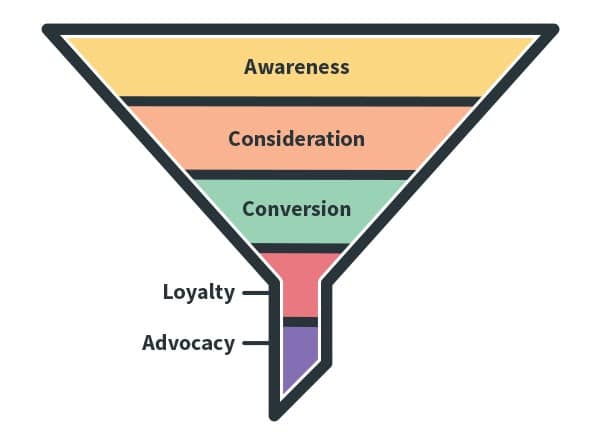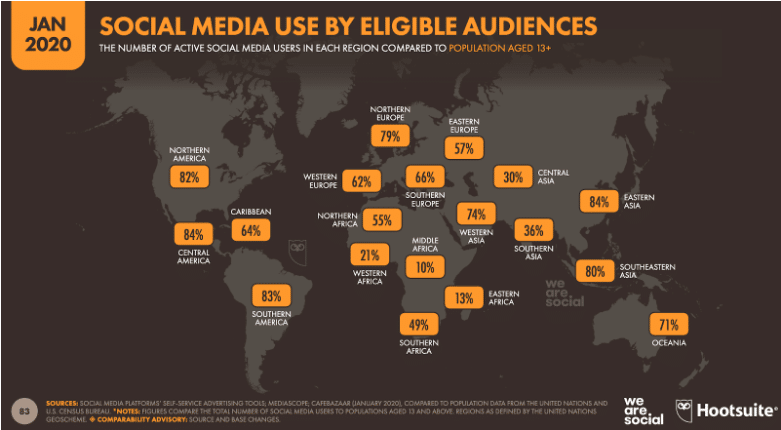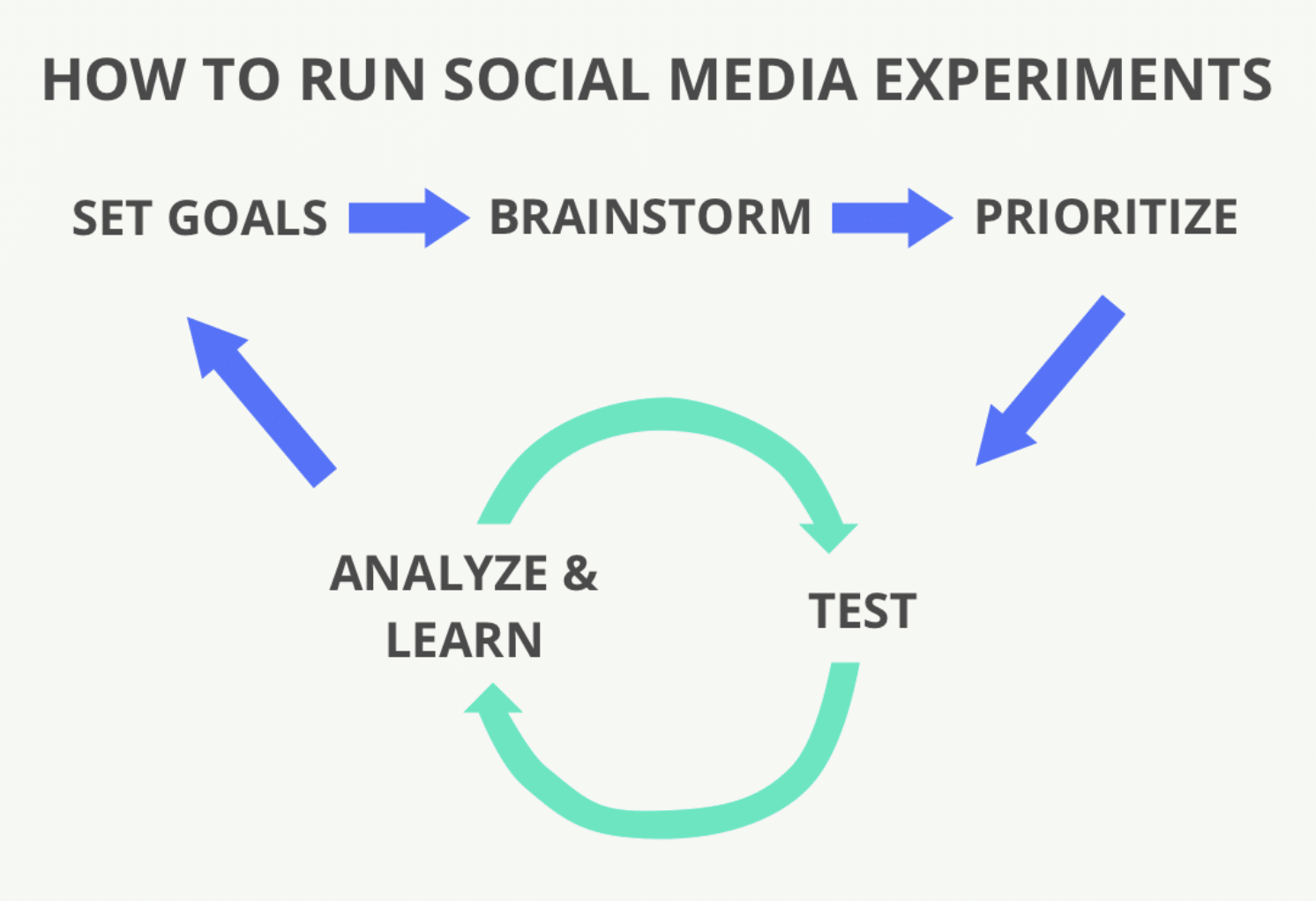Introducing: Marketing Myths, a series where we’ll take some of the most common marketing misconceptions and, with the help of data and industry experts, go about debunking them.
To kick off the myth busting, we’re starting with the misunderstood world of social media, and tackling a phrase that many marketers likely hear far too often: “Social media? That’s only for the top of the funnel.”

(Source: Sprout Social)
If you just let off an involuntary (or voluntary) eye roll, or had a flashback to hearing this exact phrase after putting a mountain of resources into a social media strategy, come along with us.
We’re here to give you the backing you need to build your case, disprove naysayers, and walk away with a social media strategy for every part of the funnel—from the top of the top, to the bottom and beyond.
Here to debunk this myth once and for all is Bethany Cantor, Head of Content & Brand Marketing at Teachable. A past colleague of mine, Cantor has spent the last 10+ years playing integral roles in the marketing, content, brand, and social strategies for a wide variety of companies from large media companies, to beauty start-ups, to fitness disruptors, and more. Throughout her roles and experience, she has remained an evangelist for the power of social media, and has the results to back up her passion.
How and why has this myth permeated?
Before we debunk this myth, it’s important to understand a little bit about why it’s so prevalent in the first place.
In a study conducted by Finn, top corporate communications and PR professionals took part in in-depth interviews and reported that their organizations were skeptical about how valuable social media could be for their businesses, and there was a clear disconnect between social media and how it can drive sales. They even saw responses discounting social media over doubts about its longevity.
“There is a perception that social media is all about vanity metrics,” says Bethany Cantor.
“It’s easy to see how that perception began given that social media requires comfort with gray areas in order to understand its usefulness. The metrics provided by each channel don’t always point to obvious outcomes on the acquisition side—you have to put the puzzle pieces together yourself and get strategic about how you use each channel to your advantage.”
Cantor also touches on how a shift in the prioritization of paid social media efforts can cannibalize the potential of organic social.
“For the past several years marketing has been in this place where everything revolves around paid efforts—so much so that we’ve started to really lose touch with what audiences are looking for and how their feelings might be shown in their interactions with organic social media platforms. It’s still difficult for a lot of people to understand how to go beyond pretty pictures on social and drive real conversions,” says Cantor.
Beyond the pretty pictures—creating content that converts
At its most trivialized, social media is a place to post highly curated photographs, paragraphs, thoughts, jokes—you name it. But, as a business looking to create social media content that converts, it’s necessary to take a more thoughtful approach that takes into consideration the same factors you would with any other marketing channel.
Cantor breaks this process down into three steps.
1. Identify where your audience is
A look at the amount of users across each social channel can feel staggering to even the most native of social users.
Facebook clocks in at 2.5 billion monthly active users, YouTube at 2 billion, and Instagram at 1 billion. These broad numbers are helpful, but don’t necessarily make the case for how social media can specifically impact your business.
The impact comes from going a step deeper and examining the behavior and engagement of your own audience.

(Source: Hootsuite)
“Specifically speaking about organic content that converts, it starts with a firm knowledge of which channels work for your specific audience. If they’re only interested in Instagram, stop wasting time and resources on Twitter, and vice versa,” says Cantor.
It is possible, of course, that your audience spends time on more than one channel.
Identifying where your posts garner the most interest and engagement can allow you to make a greater case for pouring resources into a few channels, rather than trying to spread it across a whole host of channels, some of which your audience is not interested in receiving your content on.
2. Get a deeper understanding of audience behavior
“Once you know where you should be spending your time and money, the next step is spending time learning how your audience interacts with your content, your competitors’ content, and how they behave on the platform,” says Cantor. “Only after you have an understanding around those key elements can you dive into creating content.”
Analyzing the behavior of a social media audience can sound daunting (and expensive), but something as simple as a DIY tracker that links to each post and records metrics valuable for each channel (such as likes, comments, retweets, etc.) can prove quite valuable in understanding which content is resonating and which isn’t.
The same holds true with an analysis of competitors’ content. There are some metrics you won’t be able to track, but some you will. Do a deep dive into the types of content that work for your direct competitors, and learn from the types that do not.
3. Test, test, and then test some more
Once you believe you have a baseline understanding of the types of content your audience consumes on social media, it’s time to get to experimenting.
Here, Cantor recommends to “Create 3-5 post types with the knowledge you have and get ready to pivot on the fly if any one of them is not working.”
“Be clear in your intentions. For example, do you want your audience to purchase a subscription? Confront their objections in a way that clearly expresses your brand voice and then use some of the oldest tricks in the book—discounts, perks, limited time add-ons, and compelling brand partnerships.”

(Source: Buffer)
The biggest takeaway is that social media is a testing ground, and finding what converts takes a bit of legwork, and a lot of letting go of the fear to fail.
That all sounds great, but does it actually work to convert? (Plus a real-life example)
Simply put: yup. In chicken-and-egg fashion, Cantor has put these strategies into practice and, as a result, learned more strategies.
In one of her previous roles at a membership-based beauty company, Cantor and her team created a weekly show to stream on Facebook where they would review beauty products on air. They specifically addressed concerns they saw their members discuss on their social channels (everything from product prices, to ease of use, to quality). They conducted these reviews honestly and authentically, and as a result, they built up a loyal base of people tuning in.
Once they had established this loyal following, they began to notice that people were then tagging their friends, most often non-members, encouraging them to join the live shows and interact with the content. It didn’t take long for those new and interested people to comment inquiring about how their product and membership worked. They were then able to answer those questions live on air, and even hold giveaways where viewers were encouraged to tag their friends throughout the show.
The biggest result of all of this? An uptick in new membership after each week’s broadcast, and an increase in viewers, too.
“When you think about social funnels, there are a few versions of each phase but if you think about it in terms of…Brand Awareness > Familiarity > Consideration > Purchase/Conversion > Loyalty…we were all the way down the funnel getting people from Consideration > Purchase > Loyalty by simply using the social tools available to us (live streaming video and the ability to comment back to users in real time to answer questions) in the span of a 30-40-min show.”
Some of the key takeaways here? Get creative. You’ll work hard to figure out where your audience is and how they’re engaging there—figuring out what to do with that information is the fun part.
Appealing to the type of content your audience cares about makes it more shareable as well, increasing the chances you can mobilize your current customer base to bring in new ones.
The support that’s needed: commitments from the business that matter
Uncovering the right audiences, finding out what they like, creating and testing different kinds of content—this all sounds nice, but none of it is possible without organizational support. So, how can companies better support the teams working on social media?
Cantor stressed the significance of this:
“This is such an important question and the answer is simple—treat social media like a legitimate marketing channel. Sounds easy, but so many companies (big and small) have a mental block about this.”
And, she’s right. In fact, general skepticism or a lack of understanding about the value of social media for business often lead to unproductive conversations with social media managers that permeate social media myths, or a complete lack of any social media presence at all.
“You must hire top talent for social if you want real results. Social media done right is a full-time job—it shouldn’t be an add-on for someone who already has a full-time job at your company. You also need to commit to funding the content creation process. Consumers are smart and while authentic, less-produced content is popular aesthetically at the moment, no one wants to see a poorly lit, shaky video done on a white wall at your startup. You have to get past this idea of social as a fluffy nice-to-have, and staff and fund it well.”
Social media can certainly exist without support, but it just as certainly cannot perform, especially not with lower-funnel goals in mind.
Beyond the conversions
We’ve covered some of the ways social media can convert followers into customers, but it’s important not to stop there. Social media can also be a stellar tool for customer retention.
“The best way for social media to function as an engine for retention is to make sure it’s the place you’re most accurately and dynamically expressing your brand on a day-to-day basis,” says Cantor.
Myth: busted
Let’s return to that eye roll you may have given in the beginning—a visceral reaction to the all-too-common downplaying of social media’s full-funnel potential.
With thoughtful strategy, support from the powers that be, and the dedication of resources, social media can be an asset for brand awareness and all subsequent funnel stages.
All of this is not to say that making your case will cease its uphill battle—those challenges may very well persist—but coming into the conversation equipped with facts, ideas, and records of successful campaigns past can only help you, too, squash this myth.
Now, we’ll leave you with these parting words from Cantor:
“Make social a place where you experiment and entertain. And, make sure you’re looping your social team in with other core departments. Social is one of the best engines for getting your message out into the world but your social media manager can’t do that unless they’re tapped into what’s going on with product, paid marketing, events, etc.”